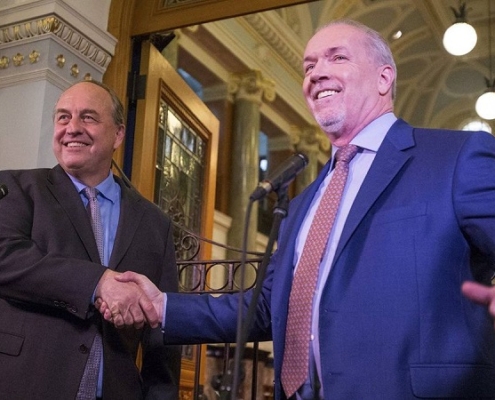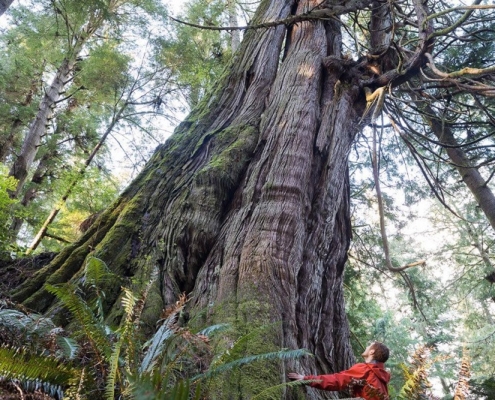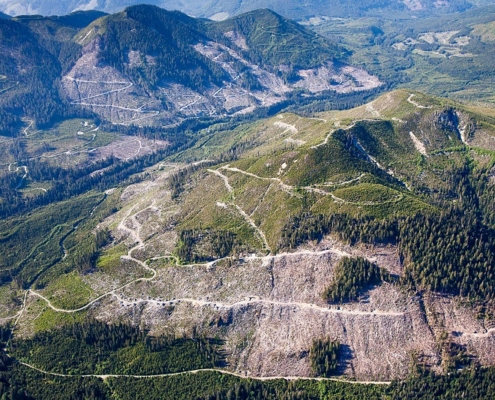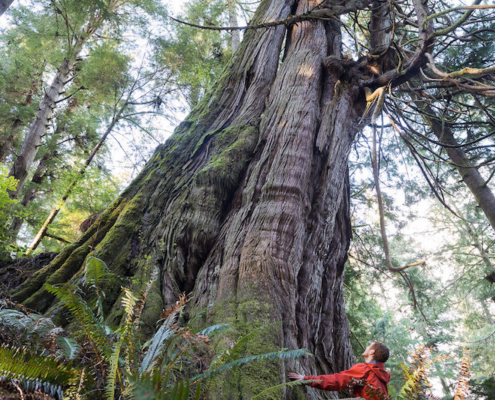
B.C. Greens agree to support NDP in minority legislature
The first Green-Social Democrat governing agreement in North American history has just been landed in British Columbia. In many nations, particularly in Europe, Green-Social Democrat coalitions have been central in pushing through vast progress for environmental and climate sustainability, social justice, and the expansion of the clean tech and renewable energy industries. In New Zealand, a Green-Social Democrat alliance ended old-growth logging there in 1999 - the Ancient Forest Alliance will work hard with this government to help them achieve this goal, which is in the BC Green's platform and which the NDP's platform includes the framework to allow this to happen. Congrat's to Andrew Weaver and John Horgan for concluding successful negotiations! Though more details are yet to come...
See article here: https://beta.theglobeandmail.com/news/british-columbia/greens-announce-support-in-legislature/article35147472/

Ancient Forest Alliance Featured in Vancouver Island’s Chinese-Language Newspaper
Vancouver Island's Chinese-language newspaper has run a story about the Ancient Forest Alliance, the Jurassic Grove, and our campaigns to protect old-growth forests, including using our big tree and stump photos. Take note that our Mandarin old-growth ecology walks are just getting underway in the Lower Mainland for the half a million Chinese-language speakers there, but sometime in the future, we hope to get it going on Vancouver Island too.
See the article: https://issuu.com/viweekly/

We have to protect all of the world’s rainforests, not just tropical rainforests
Here's an article by the Sierra Club of BC's Alys Granados, featuring a photo by the Ancient Forest Alliance's TJ Watt of recent old-growth clearcutting in the Klanawa Valley on Vancouver Island, in the Georgia Straight.
See article here: https://www.straight.com/news/912886/alys-granados-we-have-protect-all-worlds-rainforests-not-just-tropical-rainforests

Stunning grove of unprotected old-growth trees located near Port Renfrew
Here is a new article about the spectacular Jurassic Grove, a stunning old-growth redcedar forest between Jordan River and Port Renfrew not far off Highway 14 in Pacheedaht territory on Crown land. While much of the grove's 130 hectares is protected within a Marbled Murrelet Wildlife Habitat Area, there is an unprotected 40 hectare tract of giant redcedars (no logging plans for now), and the grove would be a natural protected area addition to buffer the existing Juan de Fuca Marine Trail Park and as a vitally important, extremely rare lowland old-growth stand in its own right.
See the article from Sooke News Mirror: https://www.sookenewsmirror.com

Ancient Forest Alliance Reaches Global Audiences in Al Jazeera News
Check it out! We're starting to reach global audiences, as Al Jazeera news (sort of like the BBC of the Middle East) has put out a new photo essay and article about the Ancient Forest Alliance's campaign to protect BC's old-growth forests from industrial logging. It includes photos of the Ancient Forest Alliance staff (Ken Wu, Andrea Inness, TJ Watt, Molly O'Ray) by the protected Avatar Grove, the endangered Eden Grove and Echo Lake, clearcutting on Edinburgh Mountain near Port Renfrew, forest ecologist Dr. Andy MacKinnon, Port Renfrew Chamber of Commerce president Dan Hager, Cathedral Grove, and the Catalyst mill in Port Alberni. Article and photos by John Zada.

Stunning Grove of Unprotected Old-Growth Trees Located near Port Renfrew on Vancouver Island – Conservationists Hope “Jurassic Grove” will become “Jurassic Park” one day!
For Immediate Release
The Ancient Forest Alliance has located an impressive grove of unprotected, monumental old-growth trees which we've nicknamed the "Jurassic Grove" for now (and which one day might become the "Jurassic Park" if protected). It is only a 90 minute drive west of Victoria between Jordan River and Port Renfrew. Spanning a 3 kilometer stretch alongside a portion of the 48 kilometre Juan de Fuca Marine Trail Provincial Park, it lies mainly on Crown lands adjacent to the provincial park and its popular coastal hiking trail not far from Highway 14 in the traditional unceded territory of the Pacheedaht. While most of Jurassic Grove’s 130 hectares of old-growth is protected within a Marbled Murelet Wildlife Habitat Area that is off-limits to logging, about 40 hectares is on unprotected Crown lands. As it abuts against a popular provincial park for hiking, it would be a natural addition to the park.
See our media release at: https://staging.ancientforestalliance.org/photos-media/jurassic-grove/

Conservation Group Releases Pre-Election Summary of BC’s Political Parties’ Policies on Old-Growth Forests and Forest Policies
For Immediate Release
The Ancient Forest Alliance has released a summary of BC’s major political parties’ policy platforms and governance track records (NDP and Liberals) on old-growth forest protection and related forestry issues in BC ahead of the April 9 election.
See the summary infographic and the full analysis here: https://staging.ancientforestalliance.org/2017-provincial-election-summary-bc-party-platforms-on-old-growth-forests-and-related-forestry-issues/

Avatar Grove, the sequel: Introducing Jurassic Grove
Check out the latest Times Colonist article about an unprotected ancient forest we've nicknamed "Jurassic Grove" (which one day might become "Jurassic Park" if it is protected)!
The area includes some of the finest old-growth redcedar stands anywhere. While most of its 130 hectares is protected by a Marbled Murrelet Wildlife Habitat Area, there is a 40 hectare unprotected section as well, and it all lies adjacent to the Juan de Fuca Marine Trail Provincial Park in Pacheedaht territory on Crown lands between Jordan River and Port Renfrew. The article includes interviews with the AFA's Ken Wu and TJ Watt, the Soule Creek Lodge Owner Jon Cash, and veteran BC forest activist Vicky Husband.
See the article from the Times Colonist: https://www.timescolonist.com/n

2017 Provincial Election Summary – BC Party Platforms on Old-Growth Forests and Related Forestry Issues
Head to the polls Tuesday armed with the facts! Check out our policy summary and infographic, outlining the major BC political parties' positions on forestry and old-growth forest protection in British Columbia.

Time Lapse Forest Cover Map Shows the Progressive Demise of Vancouver Island’s Old-Growth Forests over the past Century
For Immediate Release
VICTORIA – A time lapse map of Vancouver Island has been released showing the demise of the Island’s old-growth forests over a century of industrial logging. Well over 90% of the original, high productivity, low elevation old-growth forests on Vancouver Island with the biggest trees have already been logged, according to the data analysis, while over 75% of the moderate to high productivity old-growth forests (ie. the commercially valuable old-growth forests) have been logged. Conservation groups, businesses and chambers of commerce, forestry workers and unions, naturalist clubs, city and town councils across BC, and many First Nations are calling on the provincial government to expand protection for BC’s endangered old-growth forests. Instead, a sustainable, value-added second-growth forest industry would support and enhance employment for BC’s forestry workers.
See the time-lapse map sequence here: https://youtu.be/c9hTF2oxLjo
